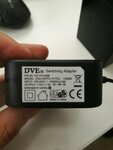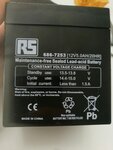Danield28
Newbie level 2
Dear forum members,
i Have a question about charging batterys. (I'm a engineer and don't know too much about elektronics) I have a 12v battery at home (Picture 1), it is low on charge and i dont have a fitting adapter to charge it nearby. I did however find a adapter that seems fitting (picture 2). I tried to google info about charging lead acid batterys, but there is so much information and different opinions about it i don't know which is right.
I learned (might be wrong):
- Voltage is being pushed by the adapter, which is 12v so still within limit range of the battery, should be ok?
- Amps are drawn by the battery, so should be ok aswell even if the adapter amps are higher?
Can i charge the battery using this adapter by cutting the adapter wires and connecting them with the right polarity on the battery clips?


i Have a question about charging batterys. (I'm a engineer and don't know too much about elektronics) I have a 12v battery at home (Picture 1), it is low on charge and i dont have a fitting adapter to charge it nearby. I did however find a adapter that seems fitting (picture 2). I tried to google info about charging lead acid batterys, but there is so much information and different opinions about it i don't know which is right.
I learned (might be wrong):
- Voltage is being pushed by the adapter, which is 12v so still within limit range of the battery, should be ok?
- Amps are drawn by the battery, so should be ok aswell even if the adapter amps are higher?
Can i charge the battery using this adapter by cutting the adapter wires and connecting them with the right polarity on the battery clips?

